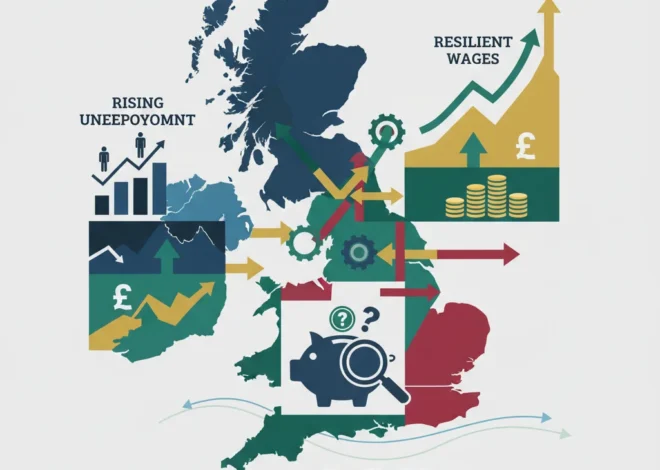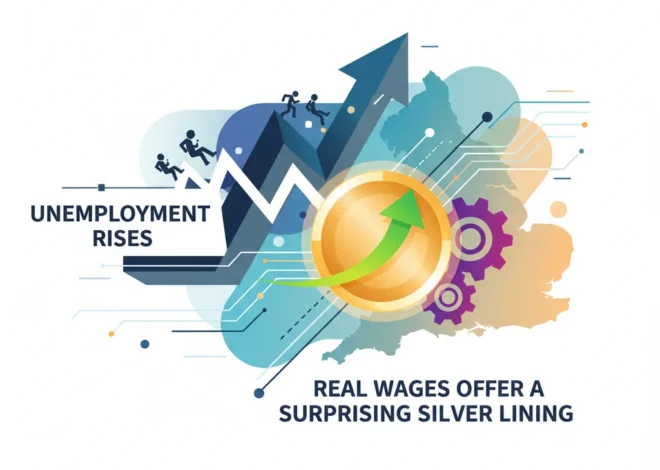
Deconstructing the Cloud: The Physical Risks Behind Our Digital Finance
In the modern lexicon of business and technology, few terms are as ubiquitous and as misunderstood as “the cloud.” We’re told our data lives there, our applications run there, and the future of the global economy is being built upon it. It’s presented as an ethereal, almost magical concept—a limitless digital plane where information flows freely. But as a recent letter to the Financial Times succinctly put it, we must remember a fundamental truth: “The cloud is really just someone else’s computer.”
This simple, grounding statement cuts through the marketing jargon and forces us to confront the physical reality behind the abstraction. Those “computers” belong to a handful of corporations, they sit in massive, power-hungry data centers, and they are subject to the same physical and geopolitical risks as any other piece of critical infrastructure. For investors, business leaders, and anyone involved in finance, understanding this reality is no longer a technical footnote; it is a strategic imperative. This article will peel back the layers of the cloud, exploring its revolutionary impact on financial technology and the concentrated, tangible risks that every investor and executive must now consider.
What Exactly Is “The Cloud”? Demystifying the Digital Haze
Before we can analyze its impact, it’s crucial to define what “the cloud” actually is. At its core, cloud computing is the on-demand delivery of IT resources over the internet with pay-as-you-go pricing. Instead of buying, owning, and maintaining your own physical servers and data centers, you can access technology services, such as computing power, storage, and databases, from a cloud provider.
This is typically broken down into three main service models:
- Infrastructure as a Service (IaaS): The most basic category. You rent IT infrastructure—servers, virtual machines, storage, networks—from a cloud provider. This is the digital equivalent of leasing a plot of land where you can build whatever you want.
- Platform as a Service (PaaS): This model provides a platform allowing customers to develop, run, and manage applications without the complexity of building and maintaining the infrastructure typically associated with developing and launching an app.
- Software as a Service (SaaS): This is the most common model. It involves the delivery of software applications over the internet, on a subscription basis. Think of services like Salesforce, Slack, or Microsoft 365.
The entire global cloud infrastructure is dominated by just a few key players. This concentration of power is a central theme when discussing the risks and dependencies of the cloud economy.
The table below illustrates the market share of the top cloud infrastructure providers, highlighting the oligopoly that has formed in this critical sector.
| Cloud Provider | Market Share (Q1 2024) | Parent Company |
|---|---|---|
| Amazon Web Services (AWS) | 31% | Amazon (AMZN) |
| Microsoft Azure | 25% | Microsoft (MSFT) |
| Google Cloud | 11% | Alphabet (GOOGL) |
| Other Providers | 33% | N/A |
Data based on estimates from Synergy Research Group.
The Cloud’s Indisputable Revolution in Finance and Investing
The financial services industry has been profoundly reshaped by the cloud. The ability to rent massive computing power on a variable basis, rather than building and maintaining expensive, proprietary data centers, has lowered the barrier to entry and fueled a wave of innovation.
The rise of fintech is inextricably linked to the cloud. Startups that are now household names could launch and scale at a speed and cost that would have been unimaginable two decades ago. A neobank can spin up secure servers in minutes, a robo-advisor can run complex portfolio algorithms on demand, and a payments company can handle millions of transactions without missing a beat during peak hours. This agility and scalability is the cloud’s primary gift to the world of banking and finance.
For established institutions, the cloud offers a path away from legacy systems that are often decades old, expensive to maintain, and slow to adapt. By migrating to the cloud, large banks and investment firms can:
- Enhance Data Analytics: Leverage powerful machine learning and AI tools for everything from algorithmic trading and risk management to fraud detection and personalized customer service.
- Reduce Capital Expenditures (CapEx): Shift the massive upfront cost of building data centers to a more predictable operational expense (OpEx).
- Improve Disaster Recovery: Utilize the global footprint of cloud providers to create more resilient and geographically dispersed backup systems.
This transformation is not theoretical; it’s a core part of the modern financial economy. The ability to process and analyze vast datasets in near real-time is now a key competitive advantage, influencing everything from stock market trading strategies to consumer lending decisions.
Echoes of 1929: Is Today's Tech Boom a Modern-Day Tale of "Shiny Toy Hubris"?
“Someone Else’s Computer”: The Hidden Risks and Dependencies
While the benefits are clear, the “someone else’s computer” reality introduces a new and highly concentrated set of risks. When an entire industry becomes critically dependent on a handful of external providers, it creates vulnerabilities that regulators and investors are only now beginning to fully appreciate.
1. Systemic Concentration Risk
The market share table above tells a stark story. The vast majority of the world’s cloud computing runs on infrastructure owned by Amazon, Microsoft, and Google. The Bank of England has explicitly warned that a major outage or security breach at any one of these providers could cause catastrophic, cascading failures across the financial system. In a 2022 paper, they noted that an operational incident at a critical third party, like a cloud provider, could “disrupt the provision of vital financial services.” (source). This elevates these tech companies to the status of systemically important financial utilities, yet they are not regulated as such.
2. Geopolitical and Data Sovereignty Issues
Where is “someone else’s computer” physically located? The answer has enormous geopolitical implications. Data sovereignty laws, such as Europe’s GDPR, dictate how and where citizens’ data can be stored and processed. A European bank using a US-based cloud provider may find its data physically stored in a data center in Virginia, subject to US laws and government agencies. This creates a complex web of legal and jurisdictional challenges, particularly in an era of rising geopolitical tensions. A trade dispute or national security directive could, in theory, impact a foreign company’s access to its own critical data.
3. Physical Vulnerabilities
The cloud is not in the sky; it’s in warehouses. These massive, non-descript data centers are physical targets. They are vulnerable to natural disasters, targeted attacks, and even simple but devastating power or cooling failures. While providers have extensive redundancy, the geographic concentration of data centers in certain areas (like Northern Virginia in the US) creates regional points of failure that could have global consequences.
The Trillion-Dollar Handshake: Unpacking the Global Economic Stakes of the Trump-Xi Summit
The Investor’s Perspective: Navigating the Cloud Economy
Understanding the dual nature of the cloud—as both a catalyst for growth and a source of concentrated risk—is vital for making informed investment decisions. This new paradigm affects how we should evaluate both the tech giants and the companies that rely on them.
Investing in the Infrastructure
The most direct way to invest in this trend is through the “pick and shovel” providers themselves: Amazon, Microsoft, and Alphabet. For these companies, cloud services are a primary driver of profit and growth, often subsidizing other ventures. An investor in MSFT isn’t just buying into Windows and Office; they are buying a major stake in the backbone of the digital economy. When evaluating these stocks, the growth rate and profit margins of their cloud divisions are among the most critical metrics to watch.
Evaluating Cloud-Reliant Companies
For any company, but especially those in tech and fintech, the following questions are now essential due diligence for investors:
- What is their cloud strategy? Are they all-in on a single provider, creating a critical dependency? Or do they have a multi-cloud strategy that mitigates risk?
- How are they managing costs? The pay-as-you-go model can lead to spiraling operational expenses. Does the company demonstrate disciplined cost management for its cloud usage?
- What are their contractual protections? What are the service level agreements (SLAs) with their provider, and what recourse do they have in the event of an outage?
The Blockchain Counterpoint
Interestingly, the rise of centralized cloud dominance has fueled interest in its philosophical opposite: decentralized technologies like blockchain. Where the cloud is “someone else’s computer,” a blockchain is effectively “everyone’s computer”—a distributed network with no central point of failure or control. While still nascent and facing its own challenges, this technology offers a fundamentally different approach to building digital infrastructure, one that directly addresses the concentration risk inherent in the current cloud model. For investors, this represents a long-term, disruptive trend to monitor.
Beyond the Ballot Box: Why a Welsh By-Election Is a Red Flag for UK Investors
Conclusion: Acknowledging the Foundation of Our Digital World
The cloud is one of the most powerful forces shaping modern economics and investing. It has unlocked unprecedented innovation and efficiency, particularly in the financial sector. However, we must resist the temptation to view it as an abstract, infallible utility. By remembering that it is, quite literally, someone else’s computer, we anchor ourselves in reality.
This reality is one of immense opportunity coupled with immense, concentrated risk. For business leaders, it demands a strategic approach to infrastructure that prioritizes resilience as much as innovation. For investors, it requires a new layer of due diligence to understand the fundamental dependencies that underpin a company’s operations. The cloud is not magic; it is a marvel of engineering and logistics, a physical foundation upon which our digital world is built. Acknowledging that foundation—with all its strengths and vulnerabilities—is the first step toward navigating the future of finance successfully.


